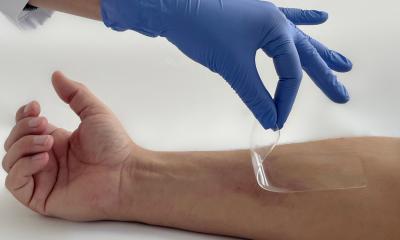The potent cardiac depressant in our own homes
Scientists state concern for both human and environmental health from a very commonly used antibacterial/antifungal agent. Brenda Marsh reports
Triclosan, an antibacterial, antifungal agent, arrived in our homes and general environment 40 years ago. It is an additive in innumerable personal hygiene products –toothpastes, deodorants, soaps, shaving creams, detergents, cosmetics, toys, fabrics, bedding, plastics – the list is endless. The agent is also used by hospitals as to combat MRSA infections – a recommended addition of 2% triclosan to showers and baths for affected patients.
Recently the chemical, regulated by the USA’s FDA, the Environmental Protection Agency and the EU, has been under review by the FDA and Health Canada.
Now researchers in California have found that triclosan (TCS), a high-production-volume chemical, is a priority pollutant of growing concern to human and environmental health. According to their findings, published online in Proceedings of the National Academy of Sciences of the USA (PNAS August 13, 2012, doi:10.1073/pnas.1211314109) the chemical was found to hamper muscle function in animals and fish. The study results have strong implications – particularly for cardiac care.
‘We report that TCS impairs ECC of both cardiac and skeletal muscle in vitro and in vivo,’ the authors write in the study abstract. ‘TCS acutely depresses haemodynamics and grip strength in mice at doses ≥12.5 mg/kg i.p., and a concentration ≥0.52 μM in water compromises swimming performance in larval fathead minnow. In isolated ventricular cardiomyocytes, skeletal myotubes, and adult flexor digitorum brevis fibres TCS depresses electrically evoked ECC within ∼10–20 min.
‘In myotubes, nanomolar to low micromolar TCS initially potentiates electrically evoked Ca2+ transients followed by complete failure of ECC, independent of Ca2+ store depletion or block of RyR1 channels.
‘TCS also completely blocks excitation-coupled Ca2+ entry. Voltage clamp experiments showed that TCS partially inhibits L-type Ca2+ currents of cardiac and skeletal muscle, and [3H]PN200 binding to skeletal membranes is noncompetitively inhibited by TCS in the same concentration range that enhances [3H]ryanodine binding.
‘TCS potently impairs orthograde and retrograde signalling between L-type Ca2+ and RyR channels in skeletal muscle, and L-type Ca2+ entry in cardiac muscle, revealing a mechanism by which TCS weakens cardiac and skeletal muscle contractility in a manner that may negatively impact muscle health, especially in susceptible populations.’
If that sounds too scientific, comments among the study’s 13 co-authors are more straightforward in their message. For example, Professor Bruce D Hammock, at the Department of Entomology, University of California Davis, said: ‘We were surprised by the large degree to which muscle activity was impaired in very different organisms and in both cardiac and skeletal muscle. At the very least, our finding call for a dramatic reduction in its [TCS] use.’
Cardiovascular specialist Professor Nipavan Chiamvimonvat, also at UC Davis, and another co-author, said: ‘The effects of triclosan on cardiac function were dramatic. Although triclosan is not regulated as a drug, it acts like a potent cardiac depressant in our models.’
Principal investigator Professor Isaac N Pessah, at the Department of Molecular Biosciences, UC Davis School of Berinary Medicine, said: ‘Triclosan is found in virtually everyone’s home and is pervasive in the environment.
‘These findings provide strong evidence that the chemical is of concern to both human and environmental health,’ he concludes.
25.08.2012











